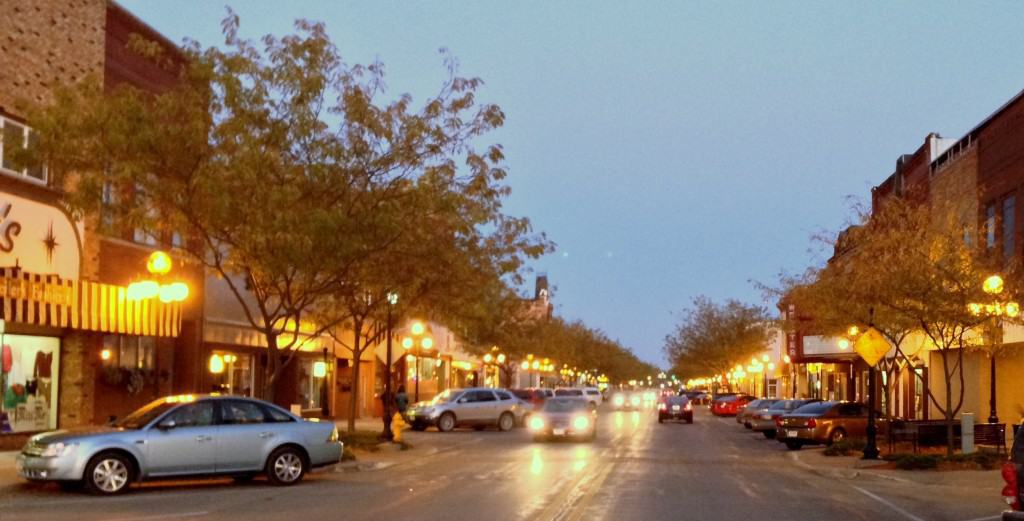
Most small town downtowns could use some sprucing up. Different businesses have different styles from a bunch of different decades. None of the signs or facades match. Clashing is probably a better description than coordinating. What can you do to get updated designs without spending a ton on the project?
Webster City, Iowa, is one of many towns that have partnered with university design students. In October 2013, 23 senior design students from Iowa State University (45 minutes away) went to Webster City. They were partnered up with local small businesses to help improve the brand image of each business. The Chamber of Commerce worked with Professor Paula Curran and Susan Erickson, Place Coordinator at Iowa State University to bring this project to Webster City.
Deb Brown, Chamber Director, said “We’re pretty excited about this project. It’s an opportunity for our businesses to have a set of young, fresh eyes create a new design for their store fronts.”
Each student worked with the business to analyze the existing store front and then designed a new identity that will communicate a lively contemporary message to current and potential customers.
In November, the students returned to present their designs.
Deb says they are now in discussion with the city about changing the city ordinances to allow proper blade signage (42 inches instead of the 18 inches currently allowed).
“One shop owner is working on changing his back entrance and is also going to change the front of one of his stores,” Deb said. “The local paper will cover the story like ‘What’s under the pink storefront?’ — think Geraldo and Al Capone’s safe kind of story.”
Another shop has used the student design work on their name on their website update, and is slowly integrating changes into the look of their store.
Was it worth it, working with students? “These were design students, and not familiar enough with creating structural changes that some of the work suggested required,” Deb said. “What is has done it gotten the store owners to talking, and being more involved in the community. For that, we are very happy. Everyone has agreed that the small investment of $50 into the work was certainly worth it.”
“If we were to do it again,” Deb said, “We’d ask for more contact and time between the store owner and the student. We’d ask for a stronger time commitment and completion of work from the student. We’d suggest involvement from the appropriate classes (engineering?) to discuss structural changes that could happen.”
Have you worked with design students in your town? What lessons can you share with other small towns?
New to SmallBizSurvival.com? Take the Guided Tour. Like what you see? Get our updates.
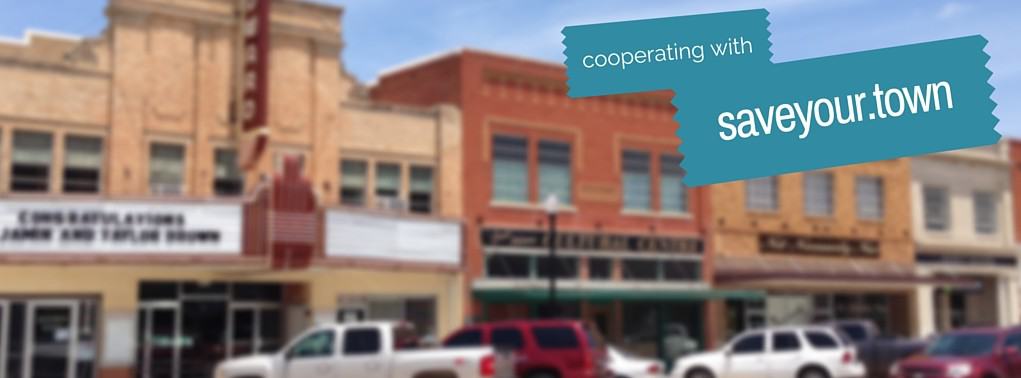






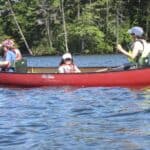
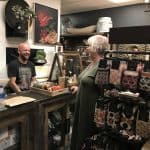

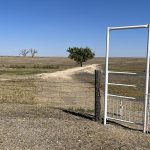
Thanks Becky — it was a good experiment and we are happy to have done the task.
The opening paragraph really got my attention because it describes our town so well! Can you give any examples of what was done to bring all of the different styles of facades together?
Deb is speaking at an event today, but was kind enough to answer this question by email:
“Yes – we are working with the planning and zoning commission to develop a working program for blade signs – and they will be the consistent factor, along with the street scape that the city spent lots of money on a couple of years ago. Because the majority of the buildings were built in the early 1900’s there is already consistency there. But try to take away a store owners individuality and you wreck havoc. So we looked for what was already there (principle number 1: open your eyes) and will build on that.”
Deb Brown
Deb mentioned Principle Number 1. That’s from a secret project of hers, pulling together principles that help make small towns successful. I can’t share any more details now, but I’m really looking forward to it!